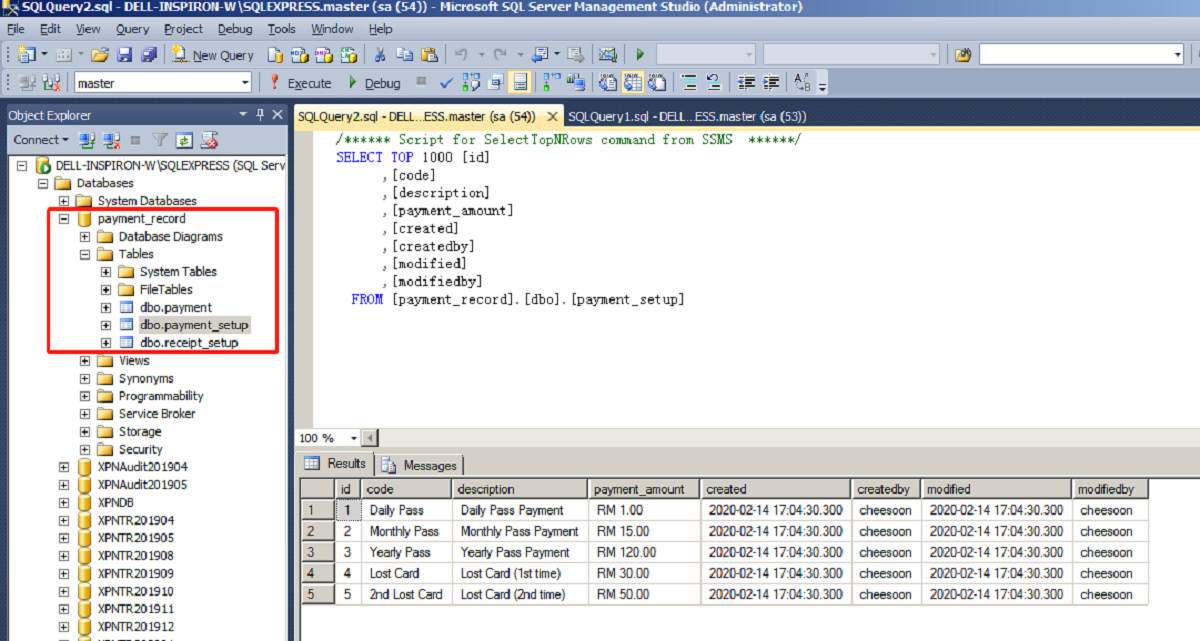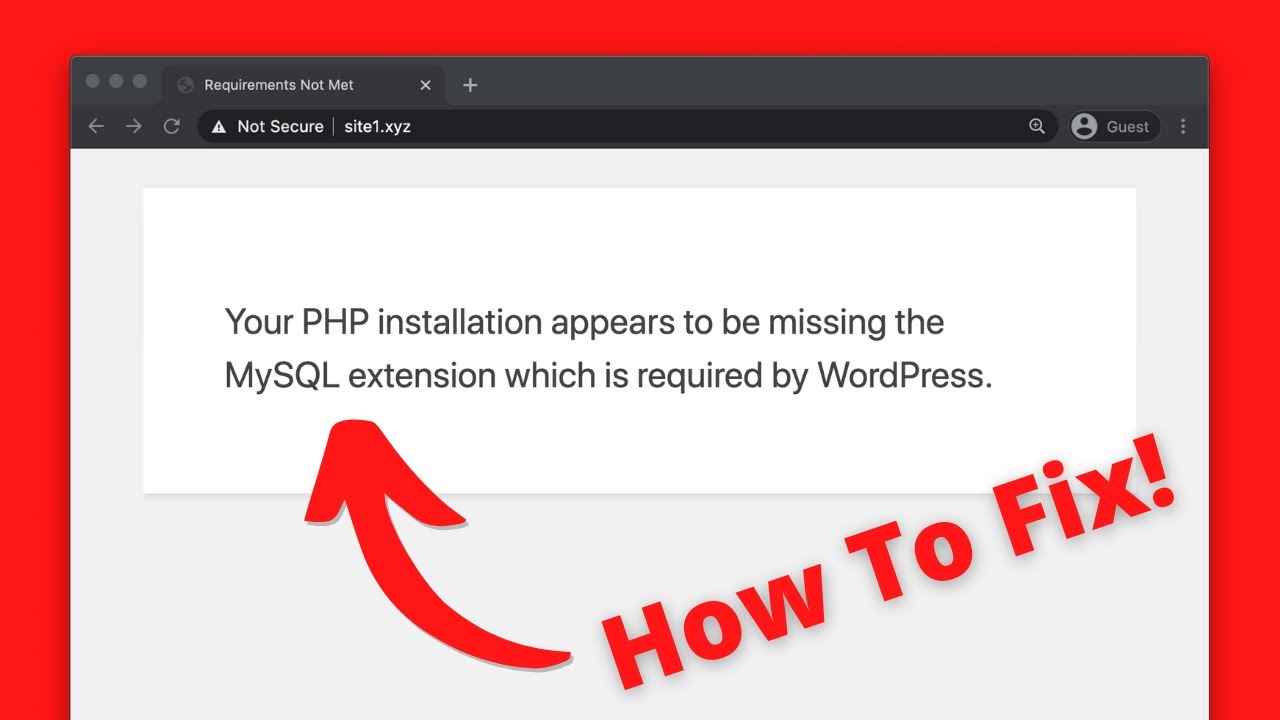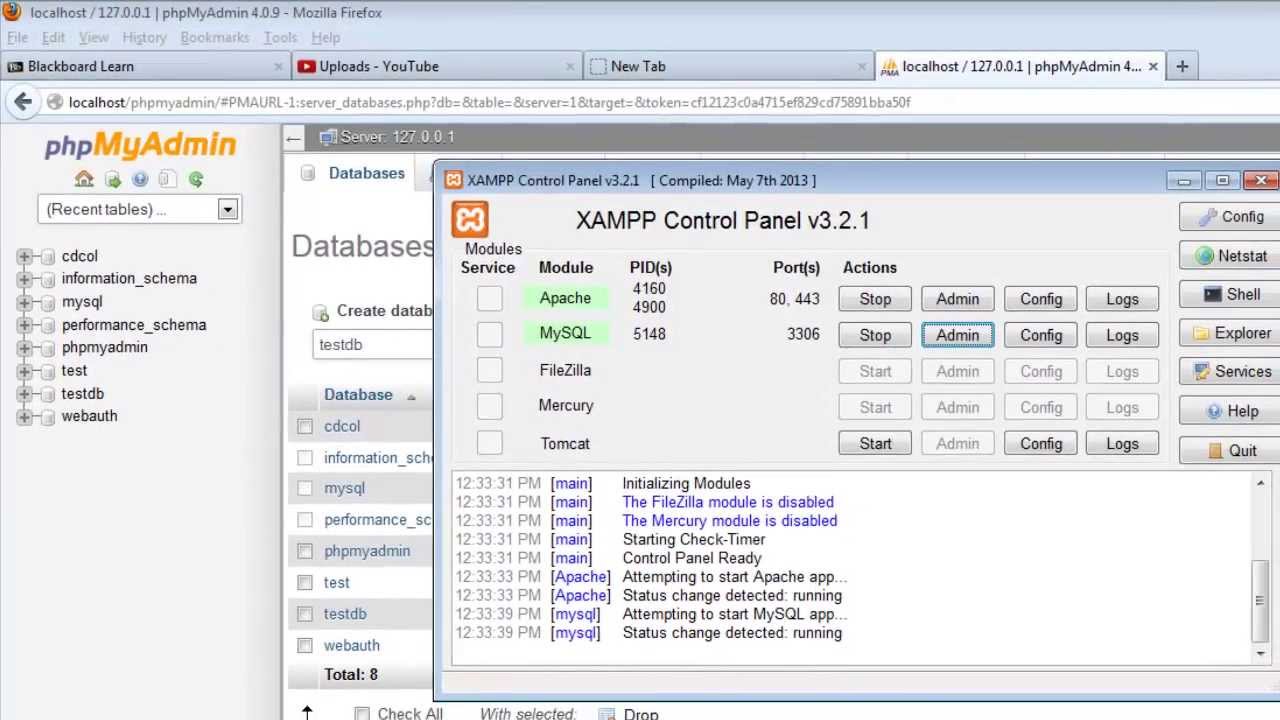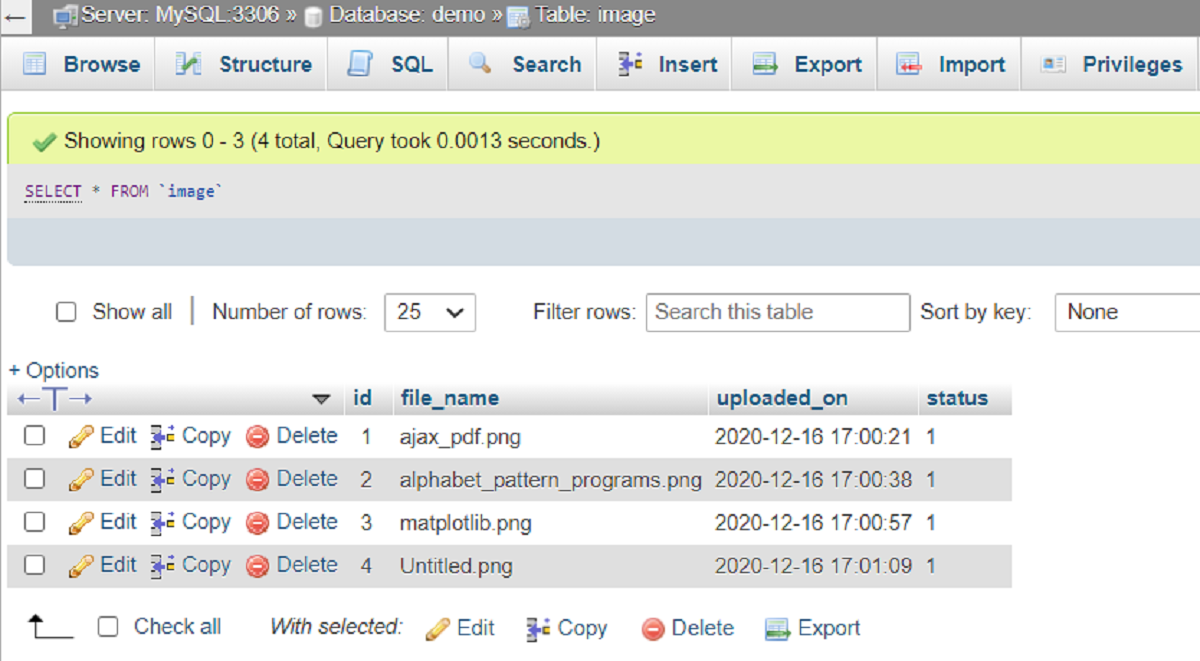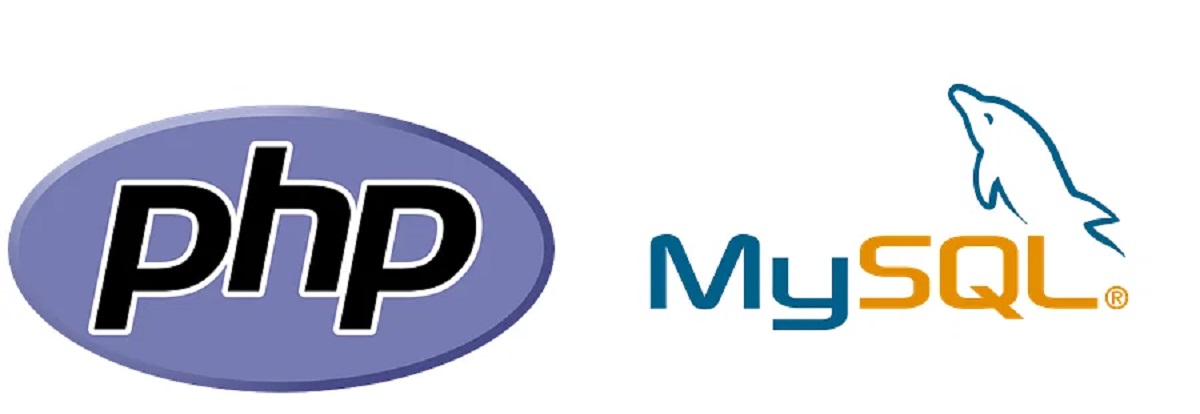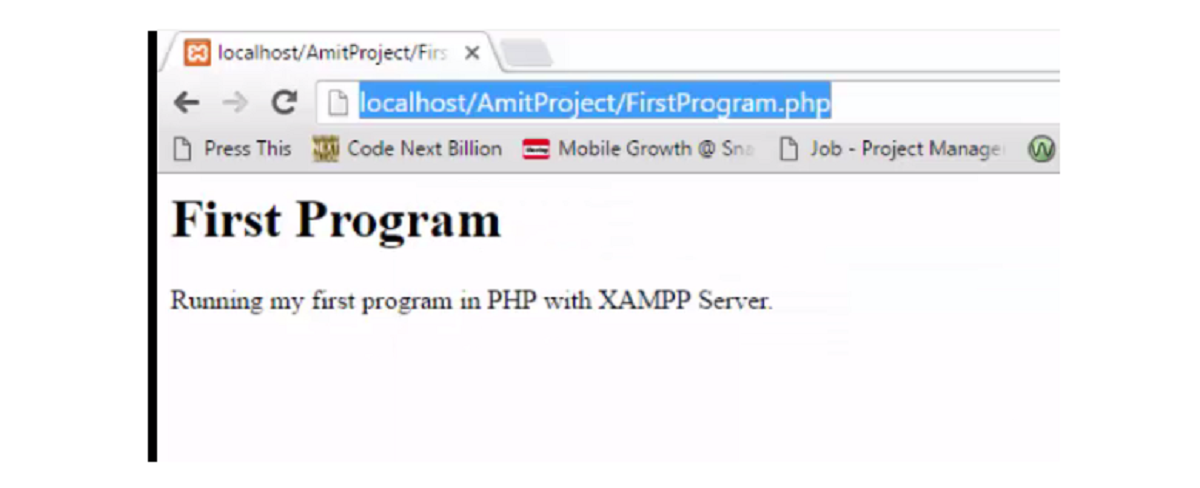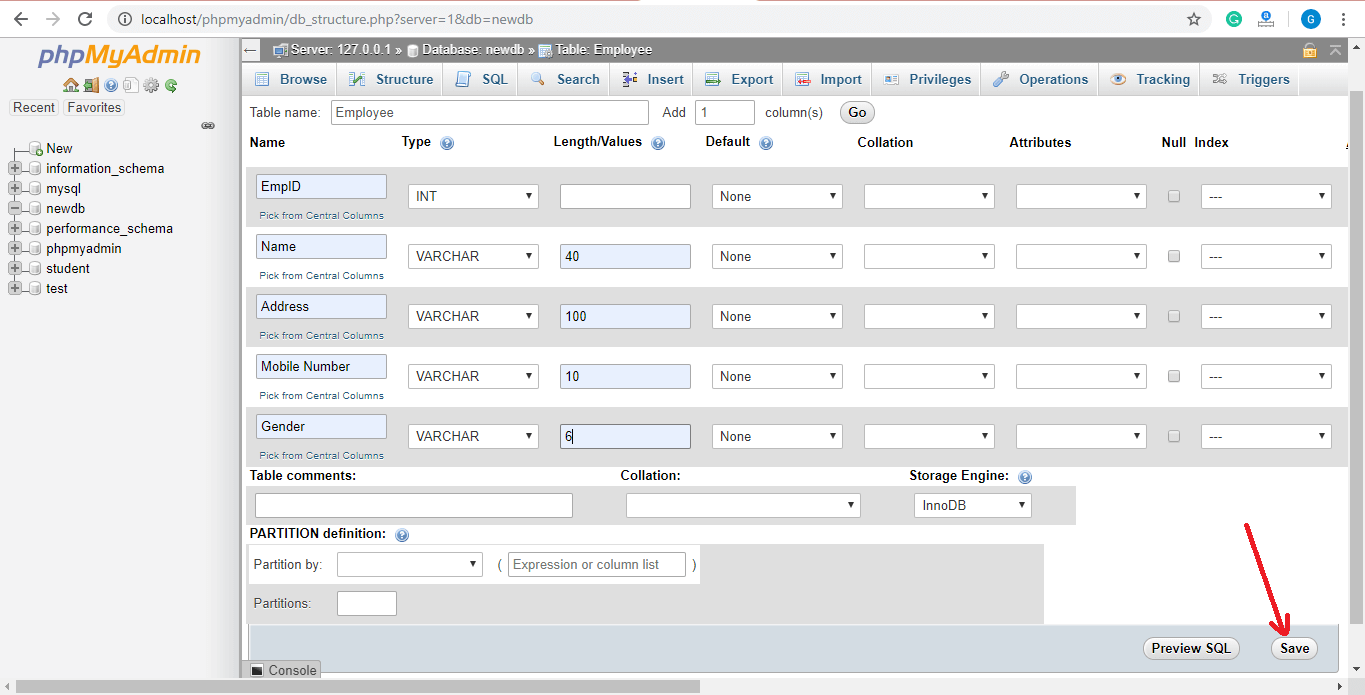Introduction
Connecting MS SQL Server with PHP opens up a world of opportunities for web developers. It allows you to seamlessly access and manipulate data from your SQL Server databases, enabling you to build powerful and dynamic web applications.
In this article, we will walk you through the process of connecting MS SQL Server with PHP, so you can start harnessing the power of these two technologies in tandem. We will cover the necessary prerequisites, installation steps, and demonstrate how to perform basic CRUD (Create, Read, Update, Delete) operations. By the end of this guide, you will have a solid understanding of how to connect your PHP applications with MS SQL Server and interact with your databases.
Before we dive into the details, it is important to have a basic understanding of SQL and PHP. Knowledge of SQL will help you write queries and interact with your database, while proficiency in PHP will enable you to integrate the SQL Server functionality seamlessly into your web applications.
Connecting MS SQL Server with PHP requires the installation and configuration of the necessary drivers and extensions. Fortunately, Microsoft provides the SQLSRV Drivers for PHP, which allow PHP to communicate with SQL Server.
Prerequisites
Before you can connect MS SQL Server with PHP, there are a few prerequisites that you need to ensure are in place. These prerequisites include:
- MS SQL Server: You should have MS SQL Server installed and running on your local machine or on a remote server. Make sure you have the necessary credentials (username and password) to access the SQL Server.
- PHP: Ensure that you have PHP installed on your machine or server. You can download the latest version of PHP from the official website and follow the installation instructions specific to your operating system.
- Web Server: You will need a web server to run your PHP scripts. Popular options include Apache, Nginx, or Microsoft IIS. Install and configure the web server according to your operating system and requirements.
- SQLSRV Drivers: Microsoft provides the SQLSRV Drivers for PHP, which are essential for connecting SQL Server with PHP. Make sure you have downloaded and installed the appropriate version of the SQLSRV Drivers that match your PHP and SQL Server versions.
Once you have ensured that these prerequisites are met, you are ready to start the process of connecting MS SQL Server with PHP. In the next sections, we will guide you through the installation and configuration steps required to establish the connection.
Note: It is recommended to have a basic understanding of SQL and PHP before proceeding further, as we will be using SQL queries and PHP code to interact with the SQL Server database.
Step 1: Install SQL Server
The first step in connecting MS SQL Server with PHP is to install SQL Server itself. You can download the latest version of SQL Server from the official Microsoft website. The installation process may vary depending on your operating system, so make sure to follow the appropriate instructions provided.
During the installation, you will be prompted to choose the edition of SQL Server you wish to install. It’s recommended to use the SQL Server Developer edition for testing and development purposes, as it provides all the necessary features and functionalities.
Once you have downloaded the SQL Server installer, run the executable file and follow the on-screen instructions to set up SQL Server on your machine. You will be prompted to choose the installation type (such as standalone, cluster, or custom) and configure various settings, including instance name, authentication mode, and database engine configuration.
It is important to remember the credentials (username and password) that you set during the installation process. These credentials will be required to authenticate your connection to the SQL Server from PHP.
After the installation is complete, you can verify whether SQL Server is running by accessing SQL Server Management Studio (SSMS) or using the SQL Server Configuration Manager.
With SQL Server successfully installed and running, you are now ready to proceed to the next steps of connecting MS SQL Server with PHP.
Step 2: Download and Install SQLSRV Drivers
In order to connect MS SQL Server with PHP, you will need to download and install the SQLSRV Drivers provided by Microsoft. These drivers enable PHP to communicate with SQL Server and perform database operations.
Before proceeding, make sure that you have already installed PHP on your machine or server. You can download the latest version of PHP from the official PHP website and follow the installation instructions specific to your operating system.
To download the SQLSRV Drivers, visit the Microsoft Download Center and search for “SQLSRV Drivers for PHP”. Make sure to choose the version that matches your PHP and SQL Server versions. The SQLSRV Drivers are available for both Windows and Linux environments. Download the appropriate driver package.
Once the download is complete, unzip the driver package to a desired location on your machine. It will contain a DLL file (php_sqlsrv.dll) that needs to be added to your PHP extension directory.
To install the SQLSRV Drivers, follow the steps below:
- Locate your PHP installation directory and find the “ext” folder.
- Copy the php_sqlsrv.dll file and paste it into the “ext” folder.
- Open your PHP configuration file (php.ini) in a text editor.
- Find the “Dynamic Extensions” section in the php.ini file.
- Add the following line at the end of the “Dynamic Extensions” section:
extension=php_sqlsrv.dll - Save the changes to the php.ini file and restart your web server.
After successfully installing the SQLSRV Drivers and configuring PHP, you are one step closer to connecting MS SQL Server with PHP. The next step involves enabling the SQLSRV extension in PHP, which we will cover in the following section.
Step 3: Enable the SQLSRV Extension
In order to connect MS SQL Server with PHP and utilize the SQLSRV Drivers, you need to enable the SQLSRV extension in your PHP configuration. Enabling this extension allows PHP to communicate with SQL Server and perform database operations using the SQLSRV Drivers.
To enable the SQLSRV extension, follow the steps below:
- Locate your PHP installation directory and find the “ext” folder.
- Edit the “php.ini” file, which is the configuration file for PHP.
- Search for the line that begins with “extension=” in the “Dynamic Extensions” section.
- Add the following line below the existing extensions or at the end of the section:
extension=sqlsrvSave the changes to the “php.ini” file and restart your web server to apply the configuration changes.
After enabling the SQLSRV extension, PHP will have the necessary functionality to connect and interact with MS SQL Server using the SQLSRV Drivers.
To verify if the SQLSRV extension is enabled, you can create a PHP file with the following code:
<?php
phpinfo();
?>Run the PHP script in your web browser and search for “sqlsrv” in the page that displays the PHP configuration information. If you see the SQLSRV section, it means the extension is successfully enabled.
With the SQLSRV extension enabled, you are now ready to establish a connection to your MS SQL Server database using PHP. In the next step, we will guide you through the process of connecting to SQL Server from PHP and performing basic CRUD operations.
Step 4: Connect to the SQL Server Database
Now that you have installed SQL Server, downloaded and installed the SQLSRV Drivers, and enabled the SQLSRV extension in PHP, it’s time to establish a connection to your MS SQL Server database using PHP.
To connect to the SQL Server database, you will need the following information:
- Server Name: The name or IP address of the server where SQL Server is installed.
- Database Name: The name of the database you want to connect to.
- Username and Password: The credentials with sufficient permissions to access the database.
In PHP, you can use the “sqlsrv_connect()” function to establish a connection with the SQL Server database. Here is an example code snippet:
<?php
$serverName = "localhost"; // Replace with your server name or IP address
$connectionOptions = array(
"Database" => "your_database", // Replace with your database name
"Uid" => "your_username", // Replace with your username
"PWD" => "your_password" // Replace with your password
);
// Establishes the connection
$conn = sqlsrv_connect($serverName, $connectionOptions);
if ($conn === false) {
die(print_r(sqlsrv_errors(), true));
}
echo "Connected successfully!";
?>Make sure to replace the placeholder values with your actual server name, database name, username, and password. Once you have replaced the values, save the PHP file and execute it in your web browser. If the connection is successful, you will see the “Connected successfully!” message.
The sqlsrv_connect() function returns a connection resource that can be used for further database operations, such as executing queries, fetching data, and updating records.
Remember to handle any connection errors by checking the return value of the sqlsrv_connect() function. If the function returns false, you can use the sqlsrv_errors() function to retrieve and display any error messages.
With a successful connection established, you are now ready to perform basic CRUD (Create, Read, Update, Delete) operations on your MS SQL Server database using PHP. We will cover these operations in the next step.
Step 5: Perform Basic CRUD Operations
Now that you have successfully connected to your MS SQL Server database using PHP, it’s time to perform basic CRUD (Create, Read, Update, Delete) operations on the database.
Here are some examples of how you can perform CRUD operations using PHP and SQL Server:
1. Create (INSERT) Operation:
To insert data into a table, you can use the sqlsrv_query() function in combination with the INSERT INTO SQL statement. Here’s an example:
<?php
$query = "INSERT INTO your_table (column1, column2) VALUES (?, ?)";
$params = array("value1", "value2");
$result = sqlsrv_query($conn, $query, $params);
if ($result === false) {
die(print_r(sqlsrv_errors(), true));
}
echo "Record inserted successfully!";
?>2. Read (SELECT) Operation:
To retrieve data from a table, you can use the sqlsrv_query() function in combination with the SELECT SQL statement. Here’s an example:
<?php
$query = "SELECT * FROM your_table";
$result = sqlsrv_query($conn, $query);
if ($result === false) {
die(print_r(sqlsrv_errors(), true));
}
while ($row = sqlsrv_fetch_array($result, SQLSRV_FETCH_ASSOC)) {
echo "Column 1: " . $row['column1'] . ", Column 2: " . $row['column2'] . "<br>";
}
sqlsrv_free_stmt($result);
?>3. Update (UPDATE) Operation:
To update existing records in a table, you can use the sqlsrv_query() function in combination with the UPDATE SQL statement. Here’s an example:
<?php
$query = "UPDATE your_table SET column1 = ?, column2 = ? WHERE id = ?";
$params = array("new_value1", "new_value2", 1);
$result = sqlsrv_query($conn, $query, $params);
if ($result === false) {
die(print_r(sqlsrv_errors(), true));
}
echo "Record updated successfully!";
?>4. Delete (DELETE) Operation:
To delete records from a table, you can use the sqlsrv_query() function in combination with the DELETE SQL statement. Here’s an example:
<?php
$query = "DELETE FROM your_table WHERE id = ?";
$params = array(1);
$result = sqlsrv_query($conn, $query, $params);
if ($result === false) {
die(print_r(sqlsrv_errors(), true));
}
echo "Record deleted successfully!";
?>Make sure to replace “your_table” with the actual name of your table and modify the column names and values accordingly.
Remember to handle any query errors by checking the return value of the sqlsrv_query() function and using the sqlsrv_errors() function to retrieve and display any error messages.
With the knowledge of basic CRUD operations, you can now perform various database operations on your MS SQL Server database using PHP.
Step 6: Execute Stored Procedures
In addition to performing basic CRUD operations, you can also execute stored procedures in MS SQL Server using PHP. Stored procedures are pre-defined database routines that can be called from your PHP application to perform complex operations or retrieve data.
Here’s an example of how to execute a stored procedure in PHP:
<?php
$procedure = "{call your_stored_procedure(?)}";
$params = array("parameter_value");
$stmt = sqlsrv_prepare($conn, $procedure, $params);
if ($stmt === false) {
die(print_r(sqlsrv_errors(), true));
}
if (sqlsrv_execute($stmt) === false) {
die(print_r(sqlsrv_errors(), true));
}
while ($row = sqlsrv_fetch_array($stmt, SQLSRV_FETCH_ASSOC)) {
// Process and display results
}
sqlsrv_free_stmt($stmt);
?>Make sure to replace “your_stored_procedure” with the actual name of your stored procedure and modify the parameter value accordingly.
In the code snippet above, we first use the sqlsrv_prepare() function to prepare the SQL statement with the stored procedure and parameters. This function returns a statement resource that can be executed.
We then use the sqlsrv_execute() function to execute the prepared statement. This function sends the request to the database server to execute the stored procedure with the provided parameters.
Next, we can use the sqlsrv_fetch_array() function to retrieve and process the results of the stored procedure. This function fetches the rows returned by the stored procedure in an associative array format.
Finally, we free the statement resource using the sqlsrv_free_stmt() function to release any allocated memory.
By executing stored procedures in MS SQL Server using PHP, you can leverage the power and efficiency of pre-defined database routines, making your application more robust and secure.
With this final step, you have completed the process of connecting MS SQL Server with PHP, performing basic CRUD operations, and executing stored procedures. You now have the necessary knowledge and tools to build dynamic and data-driven web applications using PHP and MS SQL Server.
Conclusion
Connecting MS SQL Server with PHP opens up a world of possibilities for web developers. By following the steps outlined in this guide, you have learned how to establish a connection between PHP and MS SQL Server, enabling you to perform various database operations and utilize the power of the SQLSRV Drivers.
Throughout this article, we covered the prerequisites for connecting MS SQL Server with PHP, including the installation of SQL Server, downloading and installing the SQLSRV Drivers, and enabling the SQLSRV extension in PHP. We then walked through the process of connecting to the SQL Server database, performing basic CRUD operations, and executing stored procedures.
With a solid understanding of these concepts, you now have the foundational knowledge required to develop robust and dynamic web applications that interact with MS SQL Server. Whether you are building an e-commerce platform, a content management system, or any other data-driven application, the ability to connect and work with MS SQL Server using PHP will greatly enhance your development capabilities.
Remember to handle error handling and security considerations when working with SQL Server and PHP to ensure the stability and integrity of your application. Regularly update your SQLSRV Drivers and follow best practices for database operations to maintain the performance and reliability of your application.
Now it’s time to put your skills into practice and explore the vast possibilities that arise when combining MS SQL Server and PHP. Happy coding!







